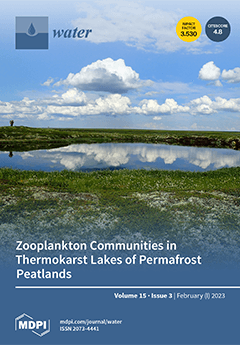In the coming years, climate change is predicted to impact irrigation water demand considerably, particularly in semi-arid regions. The aim of this research is to investigate the expected adverse impacts of climate change on water irrigation management in Saudi Arabia. We focus on
[...] Read more.
In the coming years, climate change is predicted to impact irrigation water demand considerably, particularly in semi-arid regions. The aim of this research is to investigate the expected adverse impacts of climate change on water irrigation management in Saudi Arabia. We focus on the influence of climate change on irrigation water requirements in the Al Quassim (97,408 ha) region. Different climate models were used for the intermediate emission SSP2-4.5 and the high emission SSP5-8.5 Coupled Model Intercomparison Project Phase 6 (CMIP6) scenarios. The FAO-CROPWAT 8.0 model was used to calculate reference evapotranspiration (ETo) using weather data from 13 stations from 1991 to 2020 and for both the SSP2-4.5 and SSP5-8.5 scenarios for the 2040s, 2060s, 2080s, and 2100s. The findings indicated that, for the 2100s, the SSP2-4.5 and SSP5-8.5 scenarios forecast annual average ETo increases of 0.35 mm/d (6%) and 0.7 mm/d (12.0%), respectively. Net irrigation water requirement (NIWR) and growth of irrigation water requirement (GIWR) for the main crops in the Al Quassim region were assessed for the current, SSP2-4.5, and SSP5-8.5 scenarios. For SSP5-8.5, the GIWR for the 2040s, 2060s, 2080s, and 2100s are expected to increase by 2.7, 6.5, 8.5, and 12.4%, respectively, compared to the current scenario (1584.7 million m
3). As a result, there will be higher deficits in 2100 under SSP5-8.5 for major crops, with deficits of 15.1%, 10.7%, 8.3%, 13.9%, and 10.7% in the crop areas of wheat, clover, maize, other vegetables, and dates, respectively. Optimal irrigation planning, crop pattern selection, and modern irrigation technologies, combined with the proposed NIWR values, can support water resources management. The findings can assist managers and policymakers in better identifying adaptation strategies for areas with similar climates.
Full article





